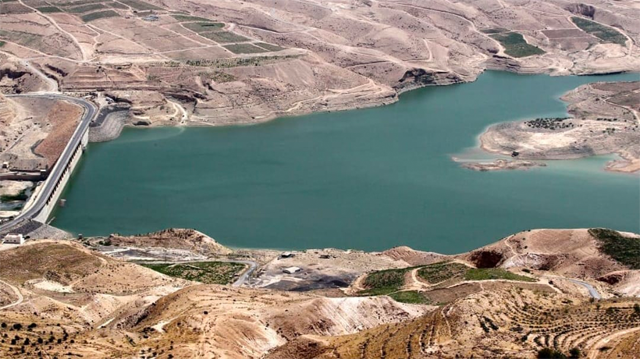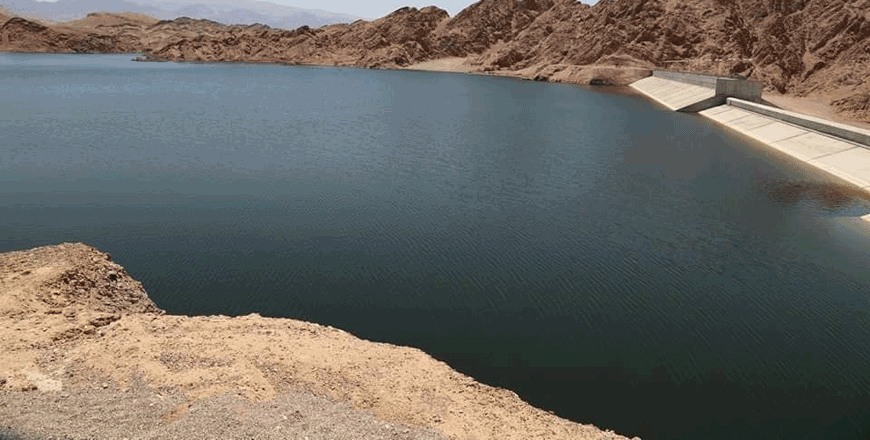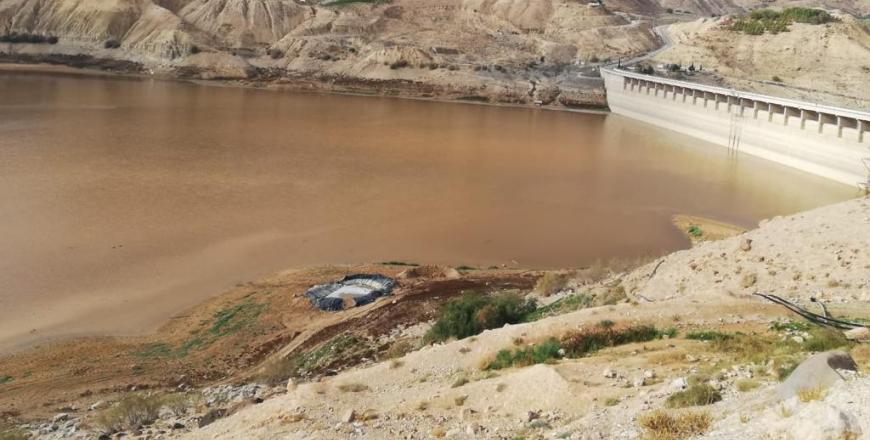You are here
Gov’t implements water harvesting projects with total capacity of 128m cubic metres — official
By JT - Oct 15,2024 - Last updated at Oct 15,2024

The initiative focuses on expanding rainwater harvesting capacity (Petra photo)
AMMAN — Jordan has implemented water harvesting projects with a total capacity of 128 million cubic metres (mcm) by the end of 2023, Secretary-General of the Jordan Valley Authority Hisham Hisa said on Tuesday.
The Ministry of Water and Irrigation, through the Jordan Valley Authority, has been driving these efforts in response to Royal directives to develop the water sector, according to a ministry statement.
The initiative focuses on expanding rainwater harvesting capacity, developing local expertise and optimising water resources through a network of large dams and designated harvesting sites such as ponds, desert dams and reservoirs, he noted.
This strategy is in line with the Water Sector Strategic Plan 2023-2040 and the Economic Modernisation Vision, which aim to increase storage capacity, improve living conditions, create jobs through innovative agricultural and livestock projects, and attract tourism investment to reduce poverty and unemployment across the Kingdom.
Highlighting Jordan’s geographical context, he noted that about 91 per cent of the Kingdom land, covering some 97,000 square kilometres, is classified as arid, with annual rainfall ranging from 50 to 200 millimetres (mm).
Another 2.9 per cent of the country is classified as semi-arid, receiving 400-580mm of rainfall, while 5.7 per cent receives 50-300mm annually.
Annual rainfall varies from 5.8 billion cubic metres (bcm) in dry years to around 11bcm in wet years, with a long-term average of 8.522bcm.
Of this, about 92 per cent evaporates, while groundwater recharge is estimated at 240-294mcm, with 713mcm contributing to surface water, according to Hisa.
He also added that the authority has been building dams since the 1960’s, resulting in the development of 10 major dams nationwide.
The drainage basins for these dams cover some 13,980 square kilometres, more than a quarter of Jordan’s total area, a significant achievement given that much of the Kingdom is desert.
As a result, some 300-500mcm of rainfall is captured annually by these dams.
Hisa also noted that by the end of 2023, a total of 521water harvesting projects have been completed, with a total storage capacity of 128.2mcm, in addition to the 288mcm capacity of the main dams.
He also highlighted the authority’s plans to expand water harvesting in areas with higher rainfall to support local development, rehabilitate agricultural and grazing lands, and create a conductive environment for livestock.
This approach aims to provide water for livestock, use harvested water for groundwater recharge, and reduce pressure on wells to ensure a sustainable supply of irrigation and drinking water for surrounding communities, he added.
Related Articles
The Ministry of Water and Irrigation on Saturday announced a water harvesting plan designed to raise rainwater storage in dams by over 25 per cent within five years.
AMMAN — Water Minister Mohammad Najjar on Thursday inaugurated Fidan Dam in Wadi Araba. At its current capacity of 2.1 million cubic me
AMMAN — The Ministry of Water and Irrigation on Sunday announced an increase in the annual rainfall rate to 53.1 per cent, equivalent to 4,3


















